June 23th
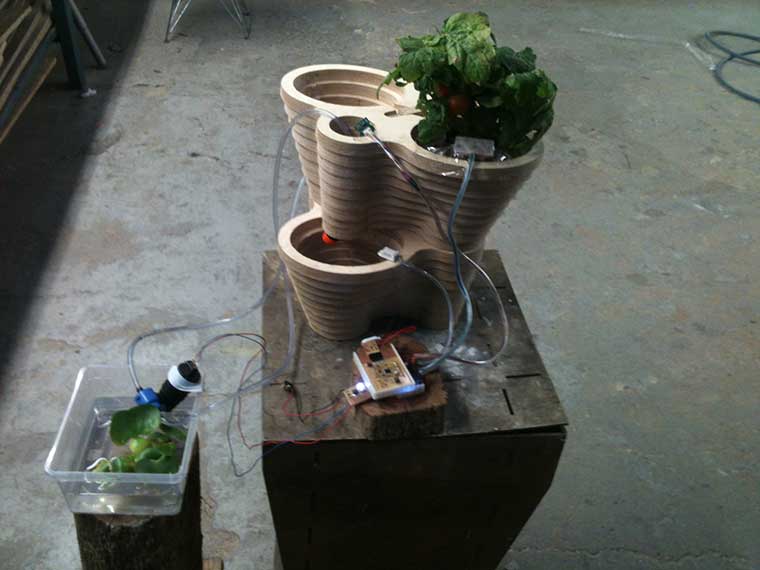
LIFE
June 21th
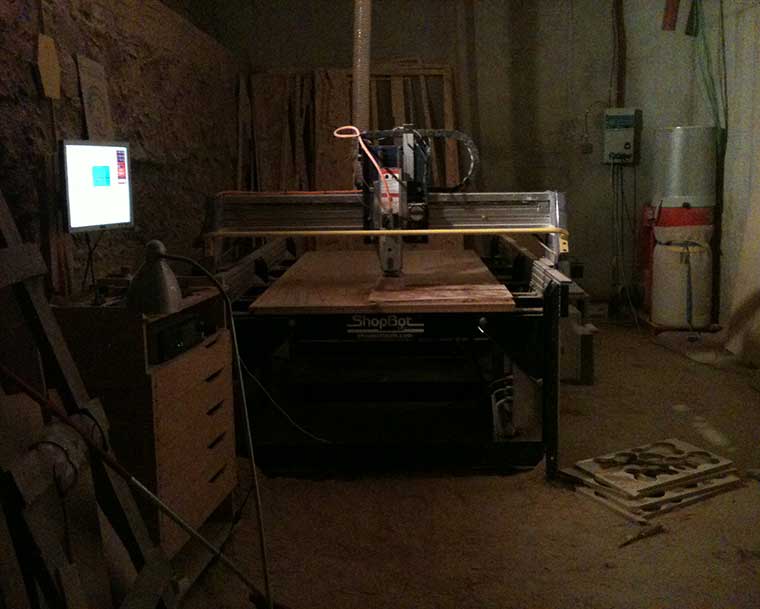
CNC CUTTED BRICK-POT
Saving as much as possible the first Brick-pot concept I had to adapt the design to a faster fabrication. The new Brick-pot has an easier way to assembly, by columns, and needs just 2 element (one the symmetrical of the other) to have a complete pot. This new Brickpot is not self-intersecting surfaces anymore, that was necessary in clayprinted technique, but is a solid realized by slices and assembled by only one central tension joint.
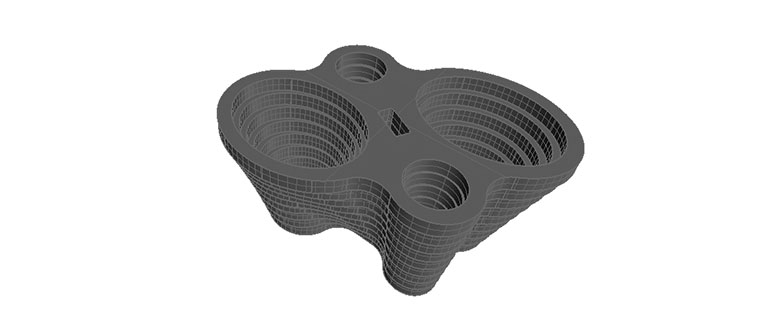
I realized it recycling some small pieces of 20mm plywood standing in the GreenFabLab's carpentry.

In the nesting file I define 4 different layers 2 for cutting and 2 for pocket, adding the drill holes directly in the V-cave shopbot software, to have a direct feedback just put the boards. The cutting strategy was first the 2 pocket (greens layers) 6mm and 12mm deep in 3 steps, than inside cut ( red ) and outside ( blue) 18.3 mm deep in 4 steps. With 3 tabs each 5mm high
Tools and speeds were setted as in Make something big week
>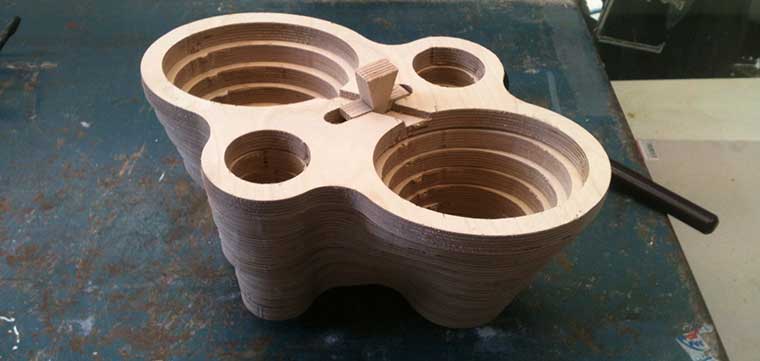
dowload file:rhino files
June 20th
ROBOT NOT AVAILABLE STILL!! LOOKING FOR ANOTHER TECNIQUE!
SETTING UP WATERING SYSTEM
ELECTRONIC DONE


3DPRINTED BOARD'S SUPPORTS
In order to protect the board from shorts an make the assembled system more stable I designed an 3d printed a set of cases by using Ultimaker 2, Cura, and transparent PLA filament.
Proceed and temperature setting had been the same defined (after a lot of experiment) for the final result of the beeback design described in 3d printing and scanning week assignment . That design had not overhanging parts so there weren't any problems
Setting:
2mm shell thikness,
5% fill, no brim ,
full supports,
top-bottom full layer .2mm
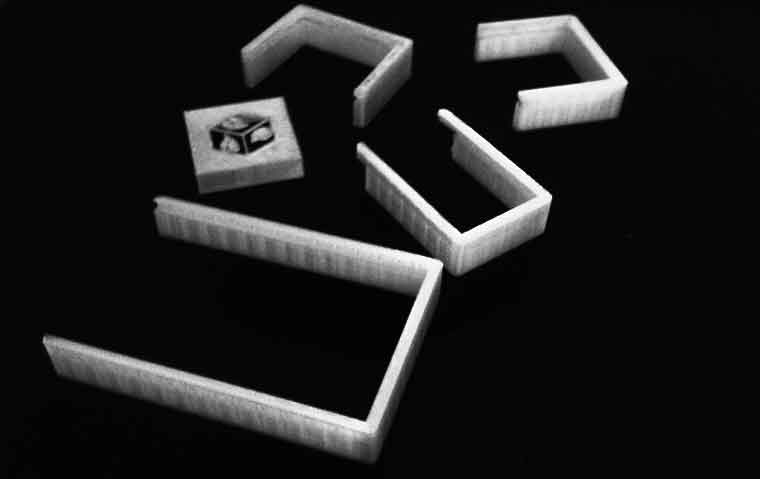
dowload file:stl and rhino files
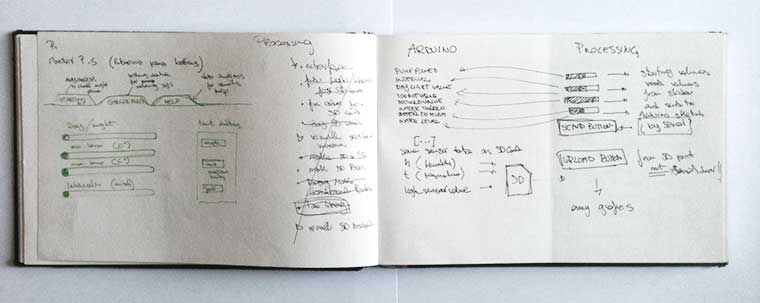
INTERFACE (DEBUG IN PROGRESS)
Using Processing and ControlP5 library I designed an interface in order to define the “Gardner rules” starting variables.
Due to the impossibility to visualize in the Arduino IDE serial monitor the char sent by processing trough the serial as well . I 'm still not able to debug the software that looks not saving the values received.

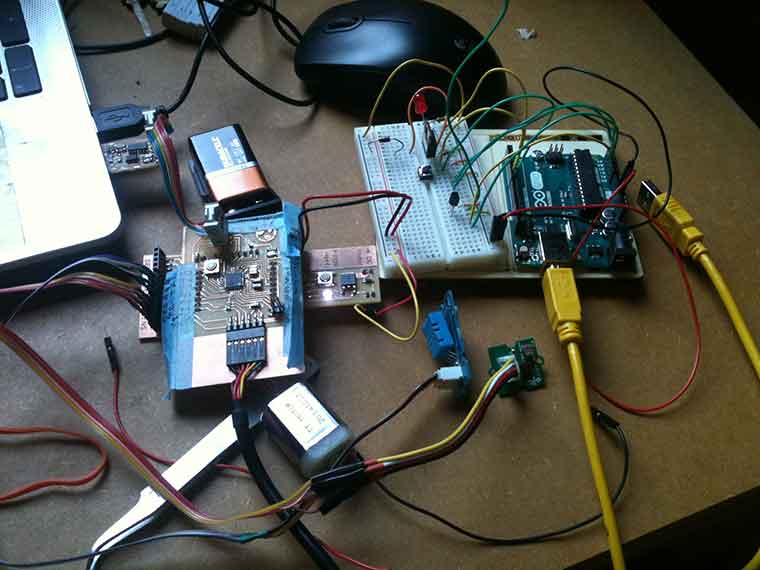
PROGRAMING
I choose to program the board using Arduino IDE in order to reach a bigger community .
In order to control the watering system first of all I had to find the proper sensors. Being a “full water ” agricultural system it was impossible to use conductivity sensors to measure the humidity and relative water requirement of plant as usual.
I had to program a mostly independent watering system in witch the sensors act as inhibitors instead of actuators.
The Garden kit host 3 sensors. 2 sensors of environmental analysis :
DHT11 as humidity and temperature sensor
Photo-resistor as light sensor
and a Prossimity Sensor to control the water-tank's level:
Ultrasonic sensor
Assembled by Groove.
In order to save energy I program the watering system to activate the pump each fixed interval of time. Every time the the interval in accomplished the board reads the environmental sensors to check if the aren't “emergency conditions” threading plans healthiness as watering in the warmer moment of the day or by night in frost conditions . When all the conditions are accomplished a mosfet as switch activate a pump that move water from a bottom tank to a top one from which water will be dripping into the vertical garden.Once activate the pump in turned off by proximity sensor that recognize when the upper tank is full.
NOT JUST SENSORS:LIBRARIES
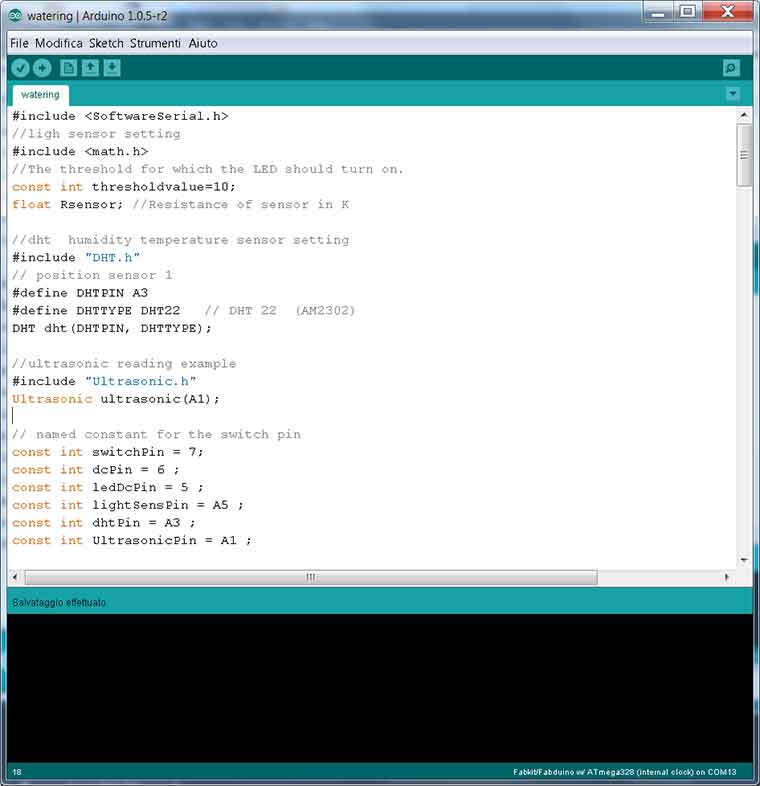
THE GARDNER RULE:VARIABLES
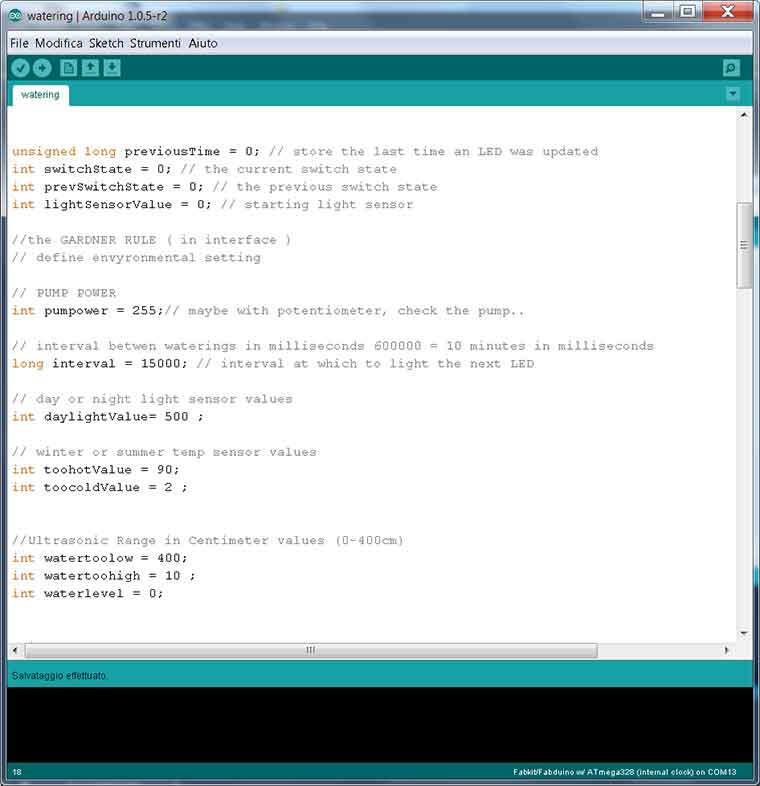
VOID SETUP
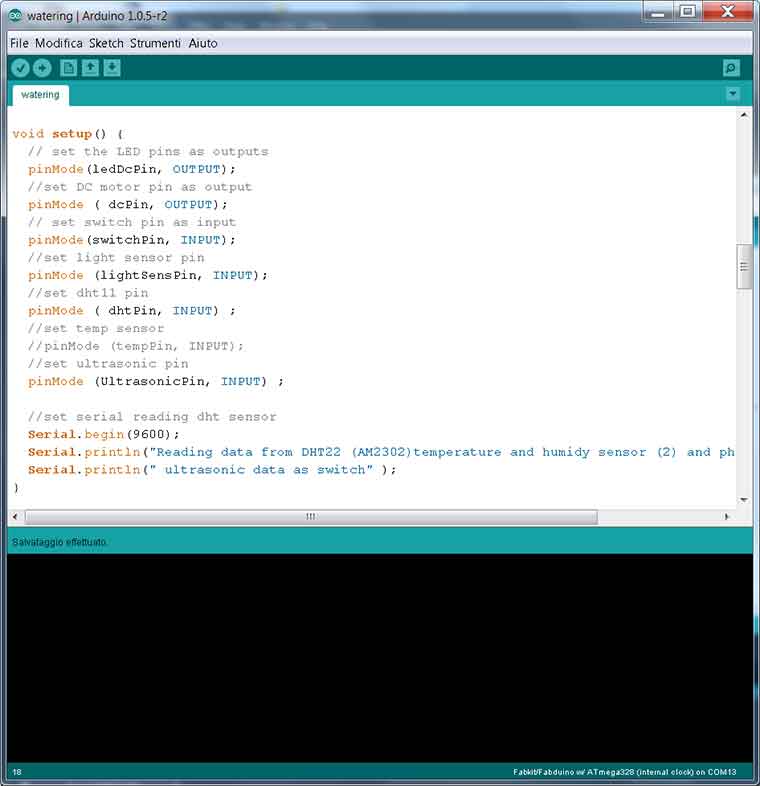
VOID LOOP
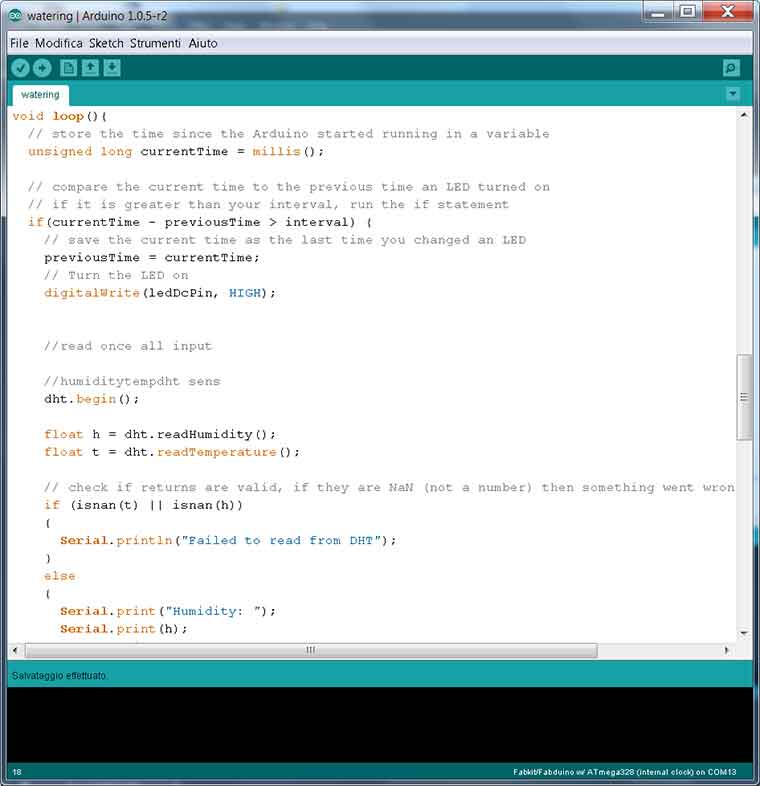
WATERING CONDITIONS:MOTOR ON
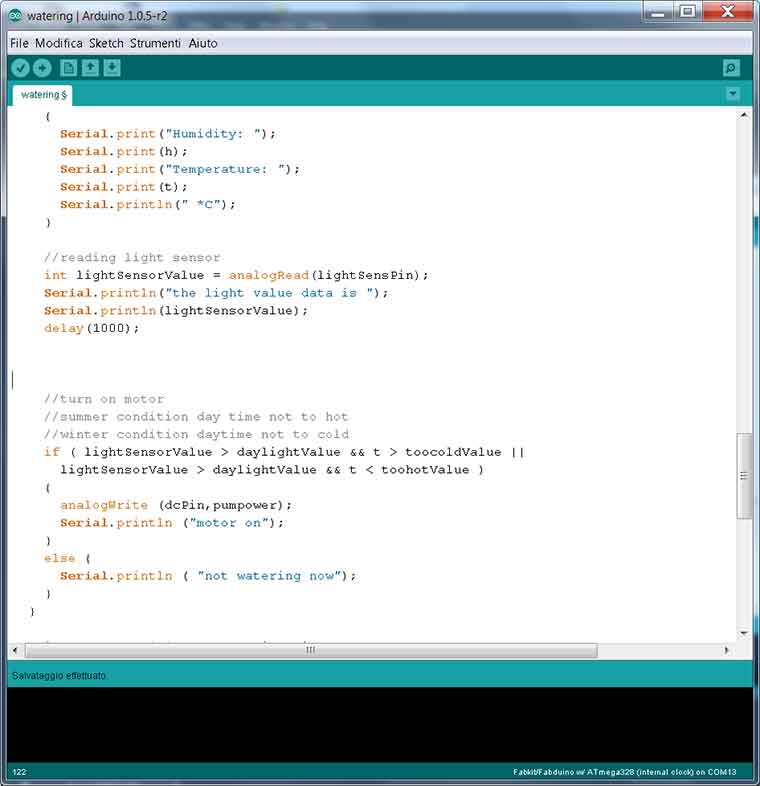
TIME:RESET THE COUNT
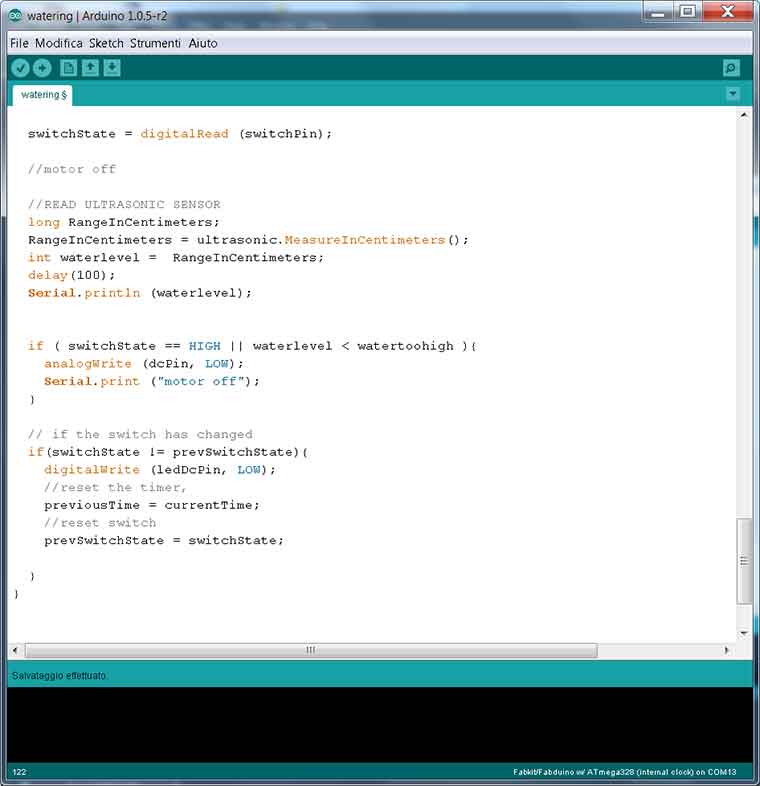
TESTING SENSORS AND TIME
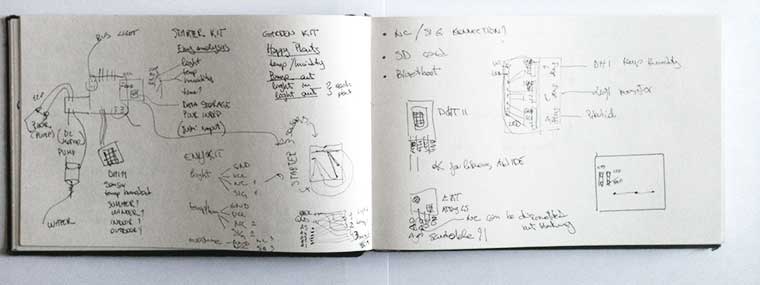
dowload file:arduinofile_
June 11th
COMMUNITY KIT
The community kit add to the gardening kit the independent power supply and the Sdcard reader It is monitoring environmental data and watering activity in order to compare them with plants healthiness. Those data with gardeners community rating and suggestion will create an on line Community of Smart Gardners.
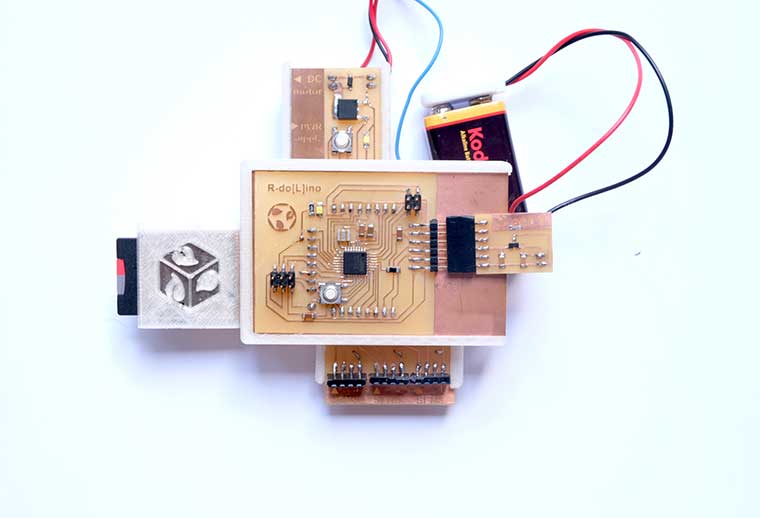
STARTER KIT
The starter kit is a an environmental monitoring system design to map the space where is planed to install the future garden. It is composed by 2 symmetrical sensor boards a DC reader breakout board to save data and a power supply board connecting with the battery.
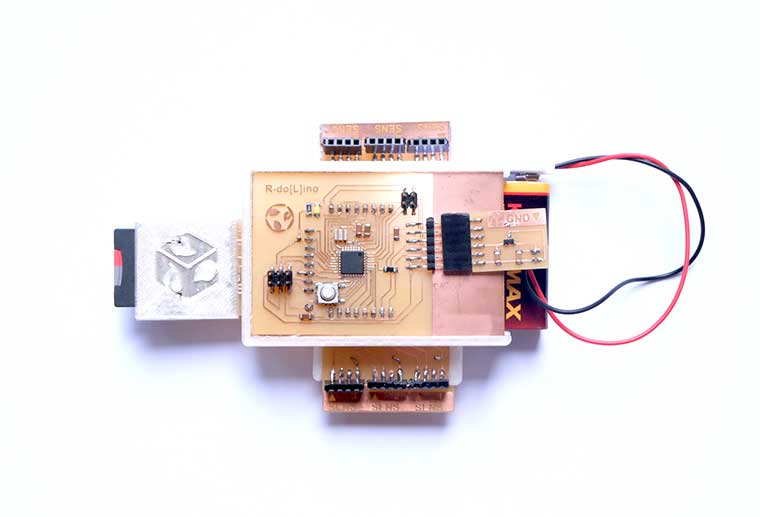
SENSORS breakout board

POWER breakout board

MEMORY breakout board (debug in progress)

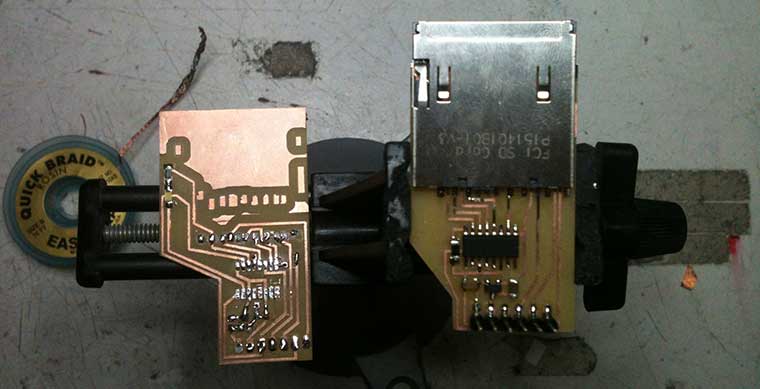
dowload file:png_
GARDENING KIT
The gardening kit is a sensor controlled watering system. Composed by a DC-Pump breakout board controlling a 12v Water pump ( recycled from car cleaning mechanism), and a sensors breakout board , connecting 3 different sensor controlling the pump activity.
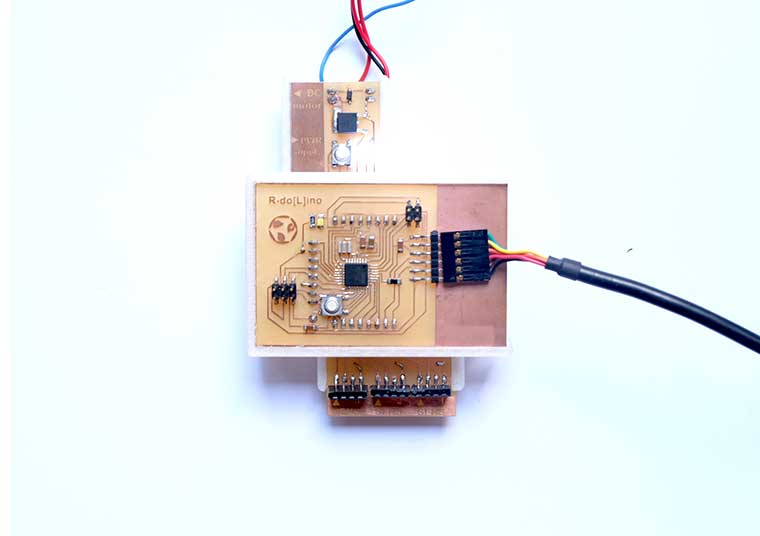
DC-PUMP breakout board
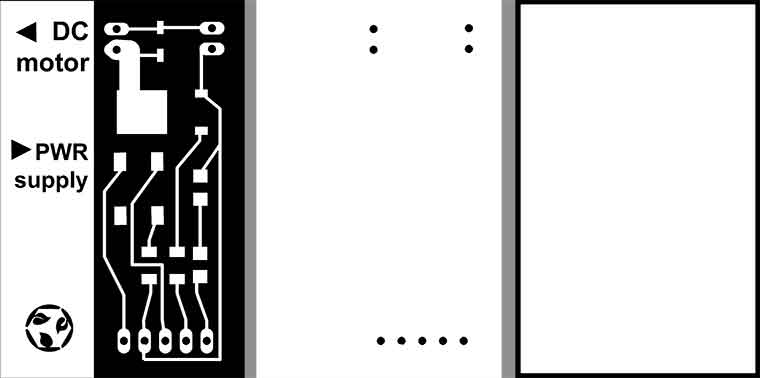
SENSORS breakout board
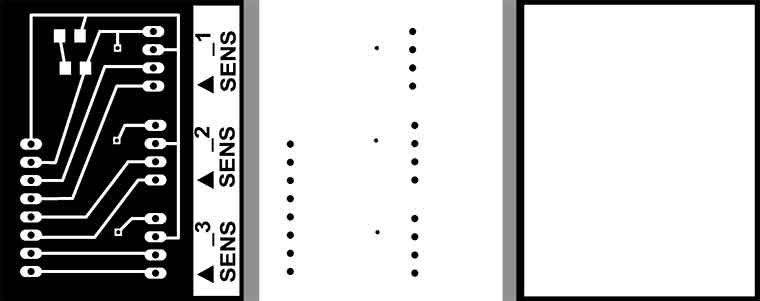
May 25th
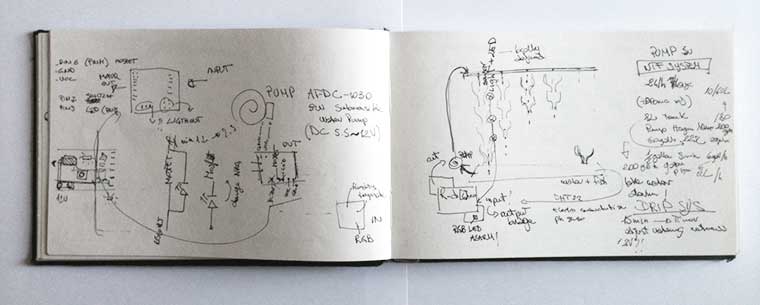
MODULAR ELECTRONIC DESIGN
I choose to develop a combinable electronic design. Starting from R-do[L]ino, my customized version of the Fab Kit ( with ISP connector and TX/RX bus connection) I designed different breakout boards: SENSOR, POWER, MEMORY , DC-PUMP combinable to define 3 different configuration of use; STARTER KIT, GARDENING KIT, COMMUNITY.
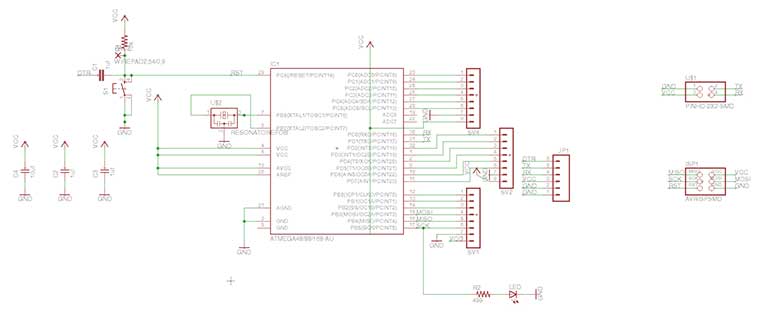
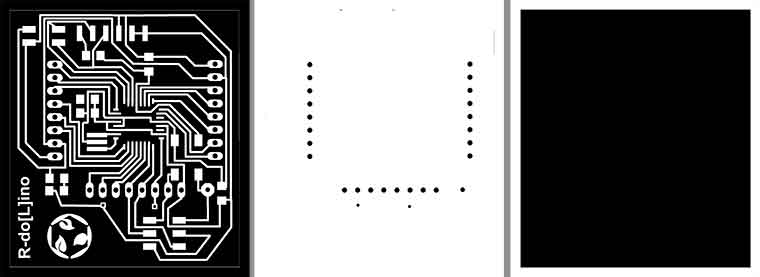
All the electronics componets ad been made using fab modules and Monofab as described in electronics production week assignment .The first milling process of the R-doLino fab kit had some trouble due to the a not enought sharp milling bit. After a second milling I used flux for easly soldering the microcontroller.
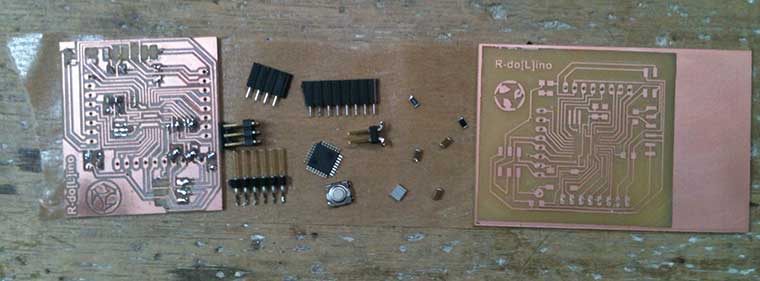
dowload file:r-dolino png_r-dolino eagle_
May 23th
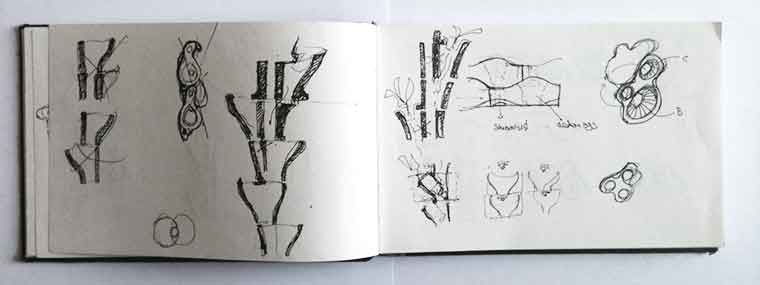
LOCAL MATERIAL + MODULAR DESIGN = BRICK
Looking for a water proof local material a felt in love for 3D printed Clay . Collaborating with Wasp Project during the Beyond Building Barcelona exposition I learn a technique that is a cross point between local material, traditional building techniques and digital fabrication.

In order to create a design affordable to different fab lab with different local material I adapt the 3d printed clay technique to a smaller scale, for smaller machines, that can easily cook to make it water resistant.
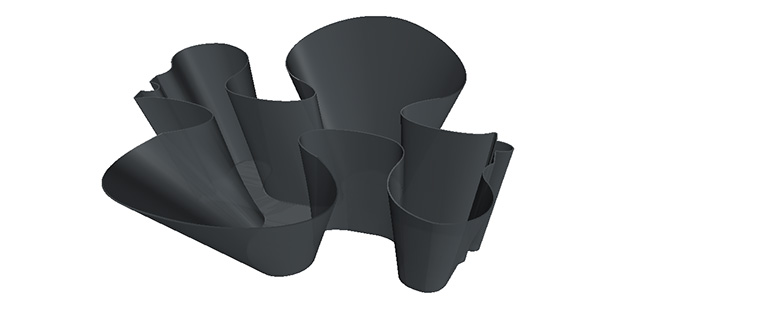
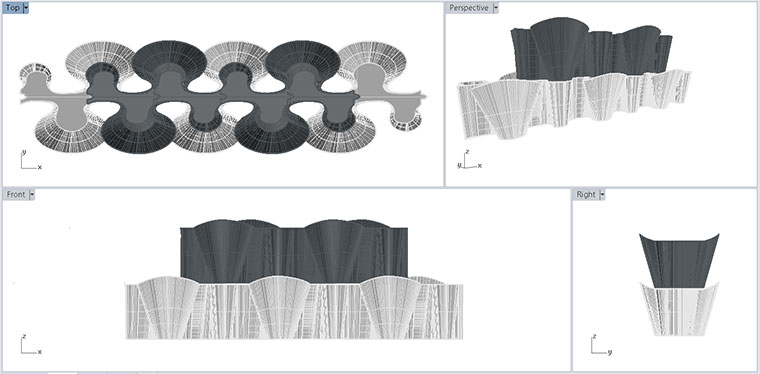
ROBOT NOT AVAILABLE!! Standby Fabrication
I have to wait to make it until ABB Robot come back to GreenFabLab...
In the meantime I tried to adapt the design to a casting technique making a composite mold...
May 20th
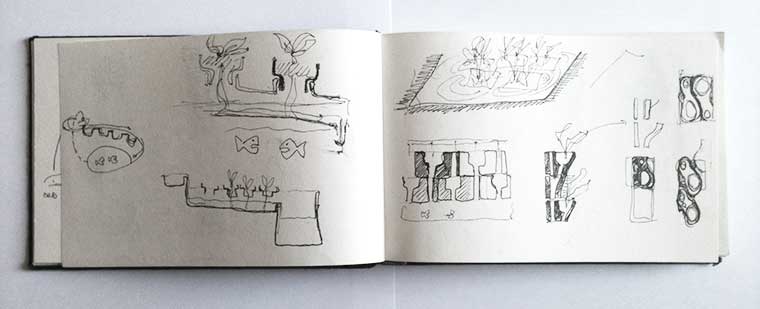
WHICH DESIGN ?
Studying experimental agriculture and degrees of interaction with environment. I discarded hydroponic technique for its chemical addiction requirement , that are not compatible with a natural environment has Collserola Park that host the Green Fab Lab. I was looking for a site specific solution for Green Fab Las Water storage/pool that need a water purification system. Maybe it will be possible adapt an aquaponic system for vertical agriculture into a Vertical flow Herbal purification system. So a concentrate on Aguaponic agricultural systems.
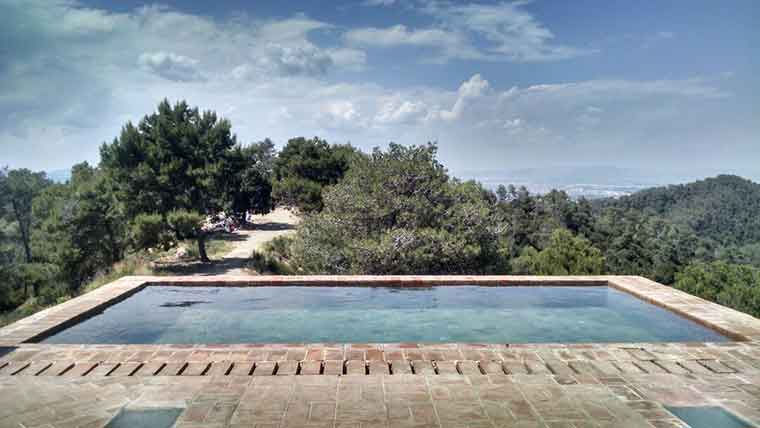
March 24th
ProdActive Landscapes project was born in the Valldaura's Laboratories (Green Fab Lab), proposed for the service of local community and landscapes designer, who wants to integrate renewable energy, and food production in landscape design, gardens, and urban wasted areas. In order to introduce local energy production in that existing high density neighbourhood where power demand is non reachable just by ordinary rooftop PV systems technologies. The whole project purpose an integrated approach to existing technologies for agriculture, herbal purification, water collection, biomass production, and PV energy production, looking for the way to optimize the land surface in order to respect sustainability issues.
ProdActive Landscapes is composed from 2 parallel project. Pick the Ground is a parametric model of territorial productive potential assessment that, looking for a more resilient city, wants to be an instrument of conscious landscape design in order to create a system of re-signified diffuse green urban areas producing food and energy. The second project is called Sky Seeders and a social project witch goal is create a community of Smart Gardners having agriculture has tool to take care of the Common. The medium is a Fab-able module for urban food and energy production, integrating a DIY environmental analysis sensor kit, acting as data bridge from the local landscape action to a web platform of smart gardeners community.
To afford the the natural circular relationship between water supplies , agriculture, and energy production as ProdActive Landscape project the system will be divided in different join-able modules having different function but similar composition: the food module, and the biomass module that represents different agricultural environmental conditions.
WHITCH PLANT? Define an ecosystem.
The design starts from the vertical hydroponic system developed from 3D ponic (https://www.3dponics.com/about/) using Hydrogel as ground support and a common aquarium pump to start the water circulation. But most that technologies in that stage we need to design the ecosystem: create a starting database of that species or families that can share water, nutrients and basically similar environmental conditions. That define the first discrimination between biomass production food production, and what specific king of food can we produce indoor. That study allows to design a possible micro indoor landscape and and optimize the hydro-gel's characteristics.
WHERE INSTALL IT? Starter sensor kit
It will be necessary define the better place in the house, roof, or backyard to install the new productive module. The staring sensor kit with a light sensor and a humidity sensor will permit test the environmental starting data of the corner choose for the installation and compare theme with the optimal environmental condition for each plant. In order to create a starting database, it will be necessary that measurement in of each plant growing environment in places controlled for commercial production as specialised green houses and plant's nurseries. In such controlled environments 3 measurements along a day will be a good starting data collection. With the addiction of a temperatures sensor the starting sensor kit can be used after installation to have a compare the plants's environment conditions with the general environment data in order to evaluate the influence of the Hydroponic plan in term of human comfort conditions.
HOW TAKE CARE ? Integrated sensors
The module will integrate sensors monitoring enviroment plants conditions.
- Light sensor measuring every hour will provide 10 hours of constant light by compensating with LED light or moving the module to follow the natural light.
- Humidity sensor measuring 3 times for day will control the plant healthfulness and water loose of the system giving alarm in case of missing water.
- Color sensor combined with chemical indicators once a day/week manually activated will permit to control chemical status of water/gel/plants.
WHAT ELSE? Sharing data platform
The indoor Data base evaluated by users feedback rating will be compared with Iaac's roof top culture, and Valldaura's permaculture data. In order to create a common data base for landscape potential assessment , (ProdActive Landscape_Pick the Ground project)
Design issues
- How many sensor for each vertical system? one kit every module/ plant or in a medium position?
- It will depend from the ecosystems developed, if composed by plant with similar environmental requirement or selected for nutrients produced each other, if growing in closed glass box or in traditional pot. It will be necessary make some test on a basic vertical system taking environmental measurement 3 time at day for each plants and comparing theme, and in a first study stage measure chemical condition of the water coming from each plants module to understand if sharing water the chemical composition will be homogenise or changing from each plant.
- Better follow natural light with mechanical supplies or use just LED?
- It will need an comparative LCA between the two models. I expect a lower energy requirement for a constant lighting but it will be necessary consider other parameters as plans production.
Technical issues
- Sensors Energy Requirement, Timing control
- Wifi data transmition
- Water pump consumption
- Water proof module
To follow the evolution
To follow the evolution of my final project back in the time read how it started in the Project Management and the Applications and Implications week pages
dowload files:
R-do-Lino Fab kit r-dolino png_r-dolino eagle_
SENSORS breakout boardpng_eagle_
DC-PUMP breakout board png_eagle_
MEMORY breakout board (debug in progress) png_
POWER breakout board png_eagle_
SENSORS breakout board v1 png_eagle_
ARDUINO CODEarduinofile_
3DPRINTED BOARD'S SUPPORTS stl and rhino files
CNC CUTTED BRICK-POTrhino files